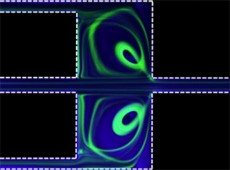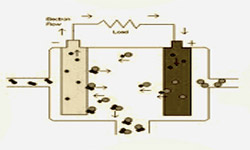Science
Production of Fiber Electrodes of Electrochemical Capacitors by Using Nanotechnology

- Read more
- 385 reads
Microfluidic Breakthroughs Offer New Options for Ease and Accuracy in Extraction of Rare Cells or Separating Blood

This image shows the size-dependent extraction of particles. The fluorescent image indicates trapping of larger particles while smaller particles pass through.
- Read more
- 446 reads
Titanium Oxide Nanotubes Used to Fabricate Optimized Anodes for Fuel Cells

- Read more
- 359 reads
European Commission consults on Future and Emerging Technologies
The European Commission is launching a public consultation to identify promising and potentially game-changing directions for future technological research.
- Read more
- 388 reads
NASA Radar Penetrates Thick, Thin of Gulf Oil Spill

NASA UAVSAR image of the Deepwater Horizon oil spill, collected June 23, 2010. The oil appears much darker than the surrounding seawater in the greyscale image. This is because the oil smoothes the sea surface and reduces its electrical conductivity, causing less radar energy to bounce back to the UAVSAR antenna. Additional processing of the data by the UAVSAR team produced the two inset color images, which reveal the variability of the oil spill's characteristics, from thicker, concentrated emulsions (shown in reds and yellows) to minimal oil contamination (shown in greens and blues). Dark blues correspond to areas of clear seawater bordering the oil slick.
- Read more
- 348 reads
Electron 'sniper' targets graphene

- Read more
- 499 reads
Immunomodulatory effect of nanoparticles

- Read more
- 371 reads
NASA's NuSTAR Spots Flare From Milky Way's Black Hole

NASA's Nuclear Spectroscopic Telescope Array, or NuSTAR, has captured these first, focused views of the supermassive black hole at the heart of our galaxy in high-energy X-ray light.
- Read more
- 432 reads
Human Rights
Fostering a More Humane World: The 28th Eurasian Economic Summi

Conscience, Hope, and Action: Keys to Global Peace and Sustainability

Ringing FOWPAL’s Peace Bell for the World:Nobel Peace Prize Laureates’ Visions and Actions

Protecting the World’s Cultural Diversity for a Sustainable Future

Puppet Show I International Friendship Day 2020



